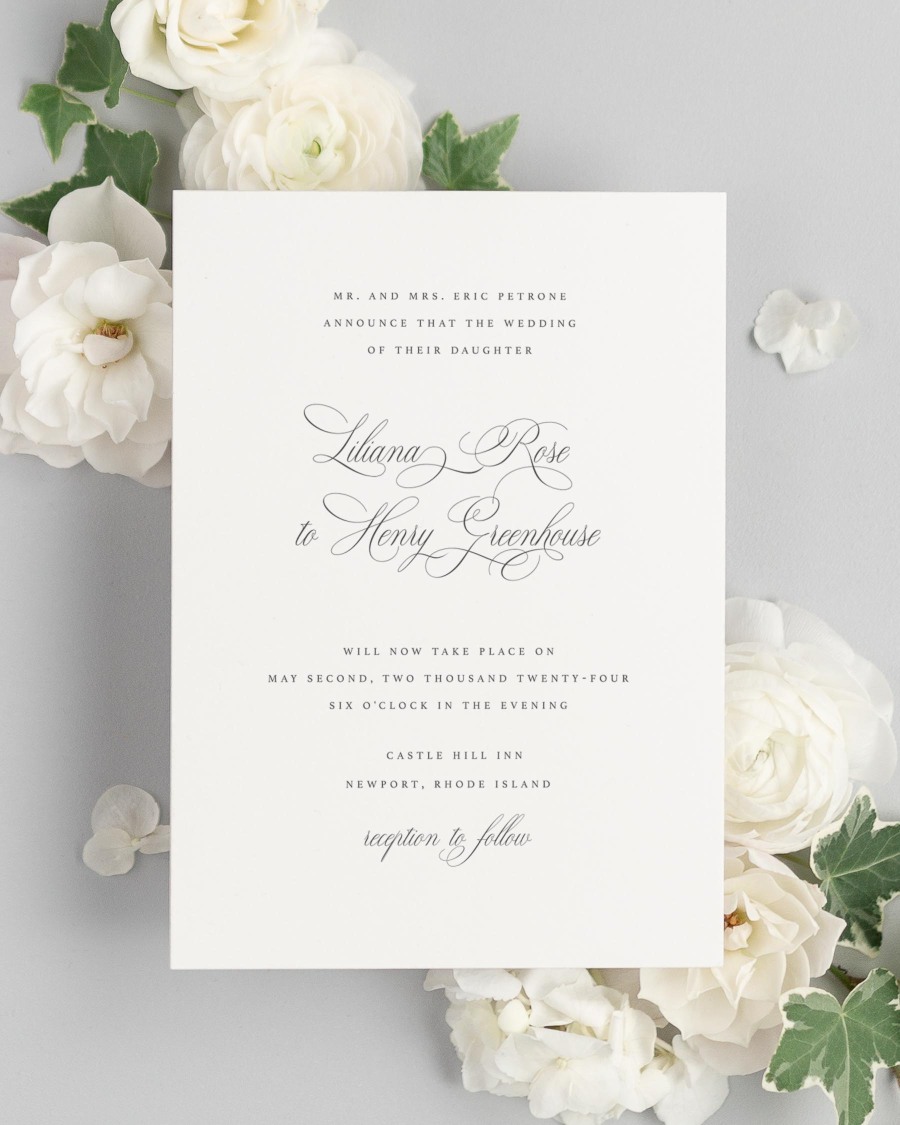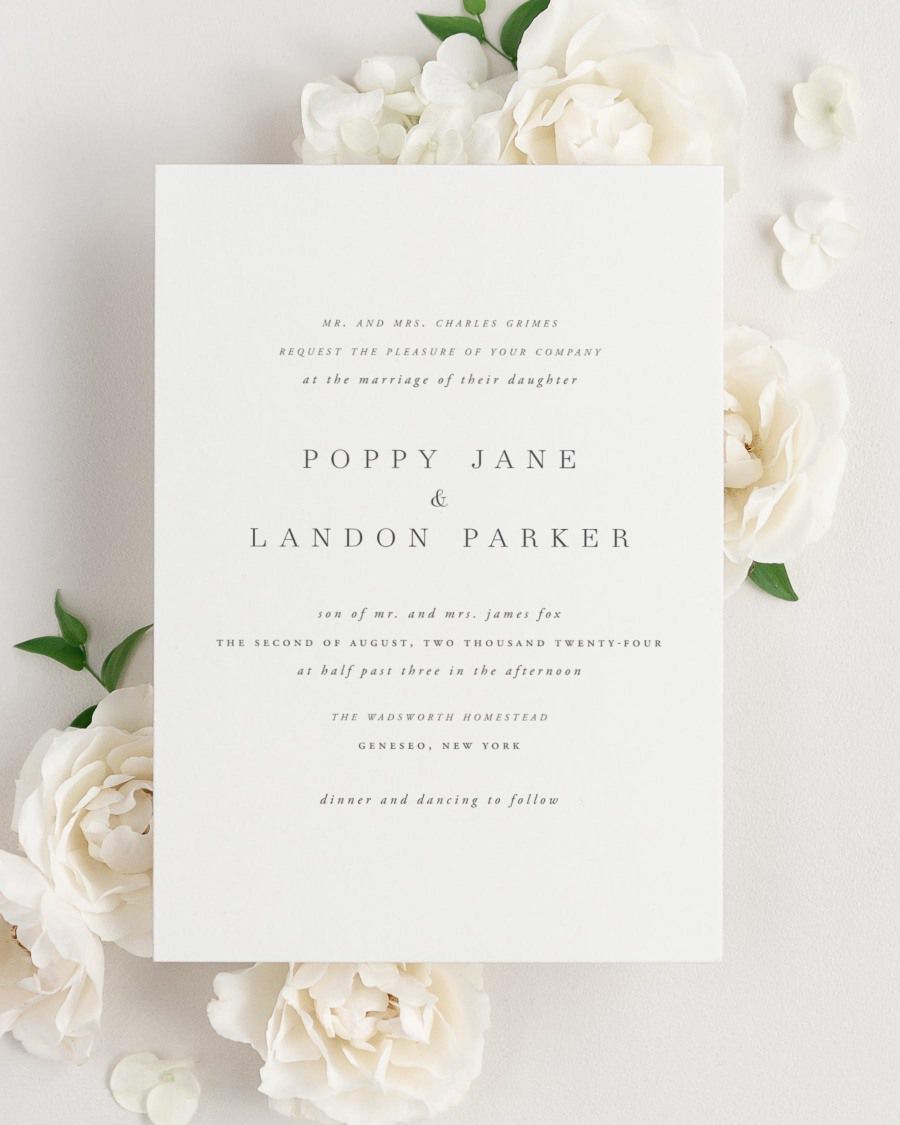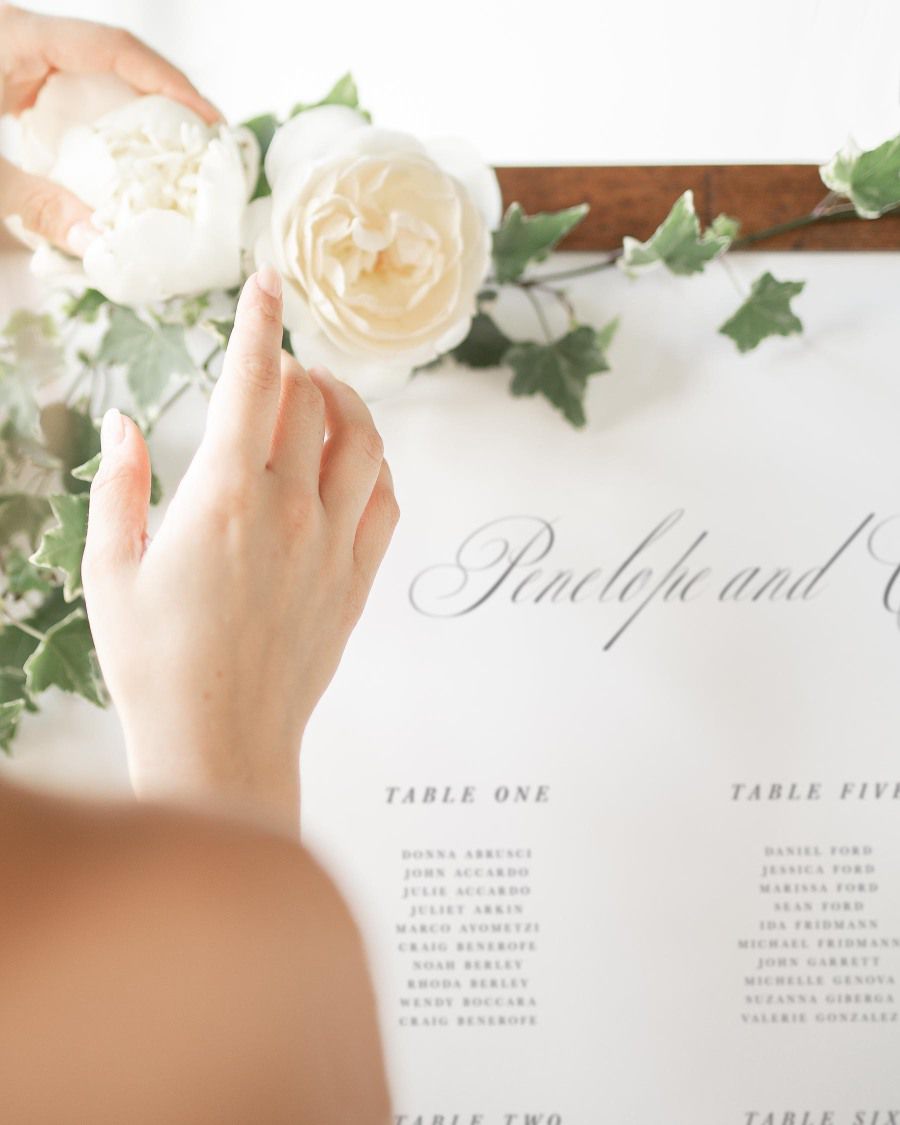Wedding invitations are your guests' first impression about your wedding and set the mood for the entire event. While you want to keep the invitation simple, you also want to avoid awkward or embarrassing situations, like a guest bringing a plus one you didn't calculate in your headcount or an uncle showing up in his favorite band's concert t-shirt.
There are a few ways to minimize misunderstandings while maximizing the enjoyment of your special day using these tips on wedding invitation etiquette.

Key Takeaways
- Send out your invitations at least eight weeks before your big day.
- Keep your wording and design simple so your guests don't miss any important information.
- Use a wedding website to supplement information, like sharing your wedding registry.
How Far in Advance Should Wedding Invites Be Sent Out?
Before sending your wedding invitation, you can send out save-the-date cards. Usually, you send these ten months before the wedding. They allow guests to mark their calendars and let them know an invitation with further information is coming.
You send out your invitations between twelve and eight weeks before the wedding. However, if you have a destination wedding that requires travel arrangements, you'll want to send your invitations at least twelve weeks before the date.
Tip: When you send out dozens of invitations, there's a chance at least one address might be wrong. Wedding invitation address etiquette includes a return address to your invites, so you can know when a recipient didn't receive their invitation and can resend one to the correct address.
When Should RSVPs for Weddings Be Due?
Allow adequate time for your guests to respond. They may need time to ask off work, make travel arrangements, or check their budget before committing to the wedding. About four to five weeks is a polite timeframe for requesting an RSVP.
Just be sure you don't make your RSVP due date any later than three weeks before the wedding. This schedule gives you time to provide the caterer with a final headcount, plan the seating arrangement, and order reception stationery.
There are several ways your guests can RSVP:
- RSVP on your wedding website
- Emailing their RSVP
- Calling the host for a verbal RSVP
- Mailing the RSVP
However, traditional wedding etiquette still recommends mailing response cards and envelopes over digital alternatives. When working with a physical RSVP card, proper etiquette is to include a pre-addressed and stamped envelope in your invitation suite to make the process as simple and convenient as possible.
What Should You Include in Your Wedding Invitation?
A wedding invitation should include these five elements:

1. Who Is Invited
Invitations can become tricky, especially when multiple people live in the same house or you're holding an adult-only wedding. That's why the wording is crucial for ensuring no one is offended and the correct people attend.
The proper way to ensure your recipient knows who's invited precisely is by listing the recipients by name on the inner envelope. For example, you start with a title like Mr., Mrs., Ms., or a professional title, followed by their full name.
Wedding invitation etiquette for families doesn't recommend invitations to state outright when an event is adult-only. Thankfully, using specific names is enough to politely let your guests know to find a babysitter for the day. However, if you don't mind children, you can add "and family" after the recipients' names.
If you're allowing guests to bring a plus one, you can add "and guest." However, if you don't want just any plus one to show up, be sure to name the guest in the invitation. While allowing guests is a nice gesture, it isn't required. Those extra people can double some of your costs and might go over what you saved for the event, so keep your budget and venue capacity in mind when deciding how many plus ones to allow.
2. Event Details
The most important part of your invitation is the event itself. You don't have to give a complete brochure guide to the event. Simple is best as your guests are less likely to miss any crucial information, and it's easier to remember.
You start by giving the full name of the couple getting married. You can also include the names of the host, such as a parent or someone paying for the wedding. It isn't necessary if the couple plans and pays for most of the event.
Next, provide the date and time. While adding an earlier start time will mean your guests are less likely to arrive late, those who do arrive on time (in wedding etiquette, this means early) will have to wait longer.
The last ceremony detail to add to your invitation is an address. To keep your invitations looking clean, you can stick with the name of the venue, city, and state.
After the wedding details, you include a small section on the reception. It can be a simple line stating, "Reception to follow." However, if it's at a different location, you will want to let your guests know ahead of time to help them plan the day.
Shine Wedding Invitations offers several enclosure options, such as a reception card or accommodation information, to keep the main invitation clear of clutter.
While these are general guidelines, the actual wording depends on the design of the invitation. Shine Wedding Invitations works 1:1 with the hosts to find the perfect wording for each invitation. Read our article on the proper wording for event details for more information on how this would look on an invitation.
3. A Wedding Website (Not Registry)
About 84% of couples use wedding websites. They are a way to provide more information on your event without cluttering your invitation. In addition, they can be beneficial if you have guests from out of town, as you can add hotel and travel details.
Your wedding website is also where you will share your registry. While wedding gifts are an unspoken expectation at every wedding, adding your registry on your invitation is generally frowned upon. Instead, add your wedding website to your invitation packet on a separate enclosure card and include registry information on the website.

4. A Dress Code
The last part of the invitation information is a dress code. Guests appreciate having a heads-up on what to wear. You can use general wording like "dress casual" or "black tie." Beyond that, you should trust your guests as most know the unspoken wedding rules, like not wearing white or black.
While some brides want to ask guests to stick to a color palette, guests don't usually appreciate being told what to wear, which can leave a poor impression.
5. A Simple Design
Creative or trendy designs can be fun but can quickly look outdated or cliche. The best invitations should be elegant and stand the test of time.
Keep the most important information displayed on the front of the invitation with your names in the largest font. Generally, avoid printing any crucial information on the back, as your guests are more likely to miss it.
If you need to add more details, opt for an insert rather than cluttering your invitation or printing it on the back.
Design a Card that Follows Wedding Invitation Etiquette
You can make sure your loved ones come to your special day by inviting them with one of Shine Wedding Invitations’ timeless invitation designs.
Order a free sample and see the superior quality of our traditional invitations.
Photo Credit:
Real Wedding / Rings: Garrett Richardson Photography









Request a Free Sample Set
Experience our papers, colors, and printing in person.
Not Sure Where to Start?
Take our styling quiz to find the right look and configuration for your stationery.
Bring Your Vision To Life
Browse our invitations and find the perfect design for your wedding.
A Difference You Can Feel
Make a statement with our luxurious letterpress wedding invitations
See Us Shine
Client visions brought to life #shinenewlywed






